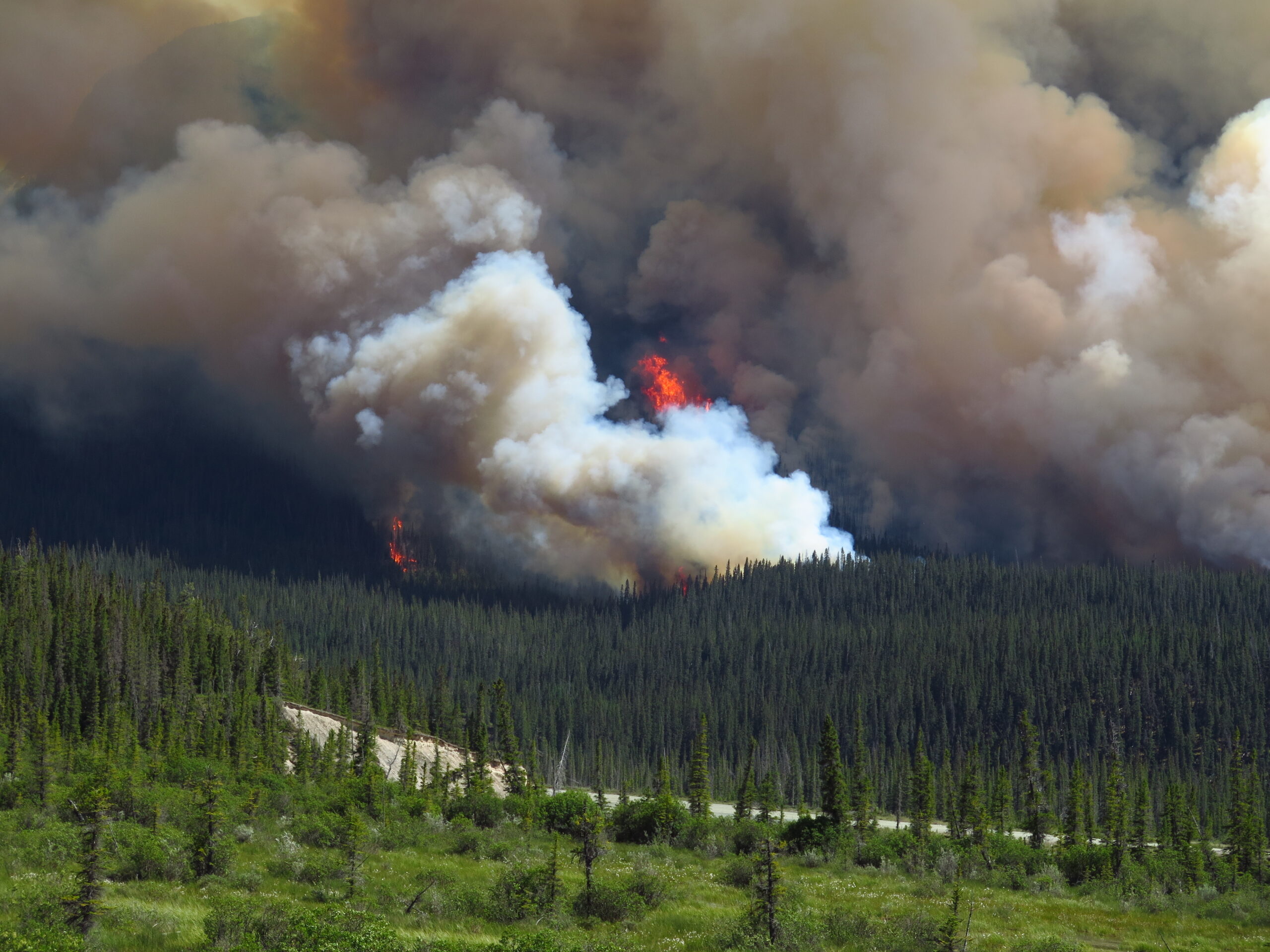
Disaster communications can be more effective when using different messaging strategies
By Changseung Yoo, Assistant Professor, Desautels Faculty of Management, McGill University

The Spreading Creek Wildfire close to the Saskatchewan River Crossing at Banff National Park in this 2014 file photo. Photo: Adobe Stock
In the past two decades, disasters have left a devastating impact, claiming over a million lives and causing nearly US$3 trillion in global economic losses, according to the United Nations Office for Disaster Risk Reduction.
When responding to disasters, disaster relief organizations (DROs) play a crucial role by mobilizing physical resources such as food and water to help impacted communities. During times of crisis, information resources are just as important as these physical resources. As such, DROs use social media to provide information rapidly and broadly to those that need it.
Many DROs post information via multiple social media accounts on a single platform, with each account representing a unique branch like national headquarters and a local chapter.
Crisis communications studies suggest that a DRO’s communication channels or social media accounts follow the strategy of “speaking with one voice” during the entire disaster response.
My research focuses on information management during and after disasters. My colleagues — Eunae Yoo and Lu (Lucy) Yan from Indiana University, and Alfonso Pedraza-Martinez from the University of Notre Dame — and I conducted a study that challenges the idea of “speaking with one voice.” We argue that this recommended strategy does not uniformly hold across the disaster management cycle.
Tailoring messages to audiences
Audiences for disaster communications include disaster victims, volunteers, donors and other supporters. Sending one consistent message on various accounts and platforms produces messages targeting the same audience when responding to a disaster.
Alternatively and counterintuitively, however, co-ordination may be facilitated by producing messages intended for different audiences. Using Twitter data collected in partnership with the Canadian Red Cross (CRC), our research shows that during the urgent response phase, social media engagement improves by 4.3 per cent from producing convergent content through the match of audiences, while a mismatch or a divergence of audiences yields 29.6 per cent more engagement when uncertainty subsides during the recovery phase.
Our study recommends that DROs take a more nuanced and dynamic approach than prior crisis communication studies suggest, demonstrating the importance of adapting communication strategies to different phases of disaster management.
Case study: Fort McMurray wildfire
We looked at communications on Twitter after the 2016 Fort McMurray wildfire, which was the costliest Canadian natural disaster. The fire reached a size of more than 480,000 hectares in just a few days, and caused estimated insured losses of $3.7 billion. More than 80,000 people were evacuated — the largest wildfire evacuation in Alberta — and the fire destroyed the region’s nearby communities, oil sands facilities and infrastructures.
The CRC responded swiftly at both the national and local levels. The local branch that primarily supported the national operations was the CRC in Alberta (CRC-A). Besides supplying and distributing physical resources, the CRC and the CRC-A actively published information on various social media platforms, with Twitter being the most used.
An example of a CRC tweet directed to victims states, “Fort McMurray evacuees registration is open, we encourage you to register if you have not already.” User engagement to tweets of this nature helps the swift and wide dissemination of the content, enhancing the CRC’s capacity to respond to disasters. For example, likes and replies to this tweet could have led to more disaster victims seeing the message and registering to receive help.
A CRC tweet directed to supporters — “Donate to help those affected by the fires in Fort McMurray” — may have resulted in more donor aid. In total, the CRC and the CRC-A posted close to 1,800 tweets in the three months after the wildfire broke out. These tweets combined received more than 38,000 retweets and 37,000 likes.
Increasing engagement
Measuring engagement as the total number of likes, retweets, clicks and replies, the team used machine learning techniques to identify the audience (victims or supporters) and then analyzed how audience match between accounts affected user engagement.
Our study establishes that a DRO’s communication strategy may involve either a match or a mismatch of audiences, contingent on the phase of the disaster management cycle. As a result, we demonstrate exceptions to the conventional recommendation from crisis communication theory, which advocates for speaking with one voice across an organization’s channels.
We further find that the changes to engagement resulting from matching content creation decisions are unequal between national and local accounts. A match of content creation decisions during the response phase proves more effective in boosting engagement for local accounts than for national accounts. These findings suggest that local accounts should prioritize matching their audience with that targeted by national accounts. Put differently, local accounts should follow the lead of national accounts regarding the supply of information.
In the recovery phase, however, while both national and local accounts should refrain from matching content creation decisions to enhance engagement, it is particularly crucial for national accounts to adhere to this principle.
Our research findings offer actionable guidelines for DROs’ social media messaging, suggesting that a flexible and adaptive approach to social media communication is essential to meet the diverse needs of those affected by disasters.
Changseung Yoo receives funding from Fonds de Recherche du Québec-Société et Culture (FRQ-SC). This article is republished from The Conversation under a Creative Commons license. Disclosure information is available on the original site. Read the original article: https://theconversation.com/disaster-communications-can-be-more-effective-when-using-different-messaging-strategies-215978